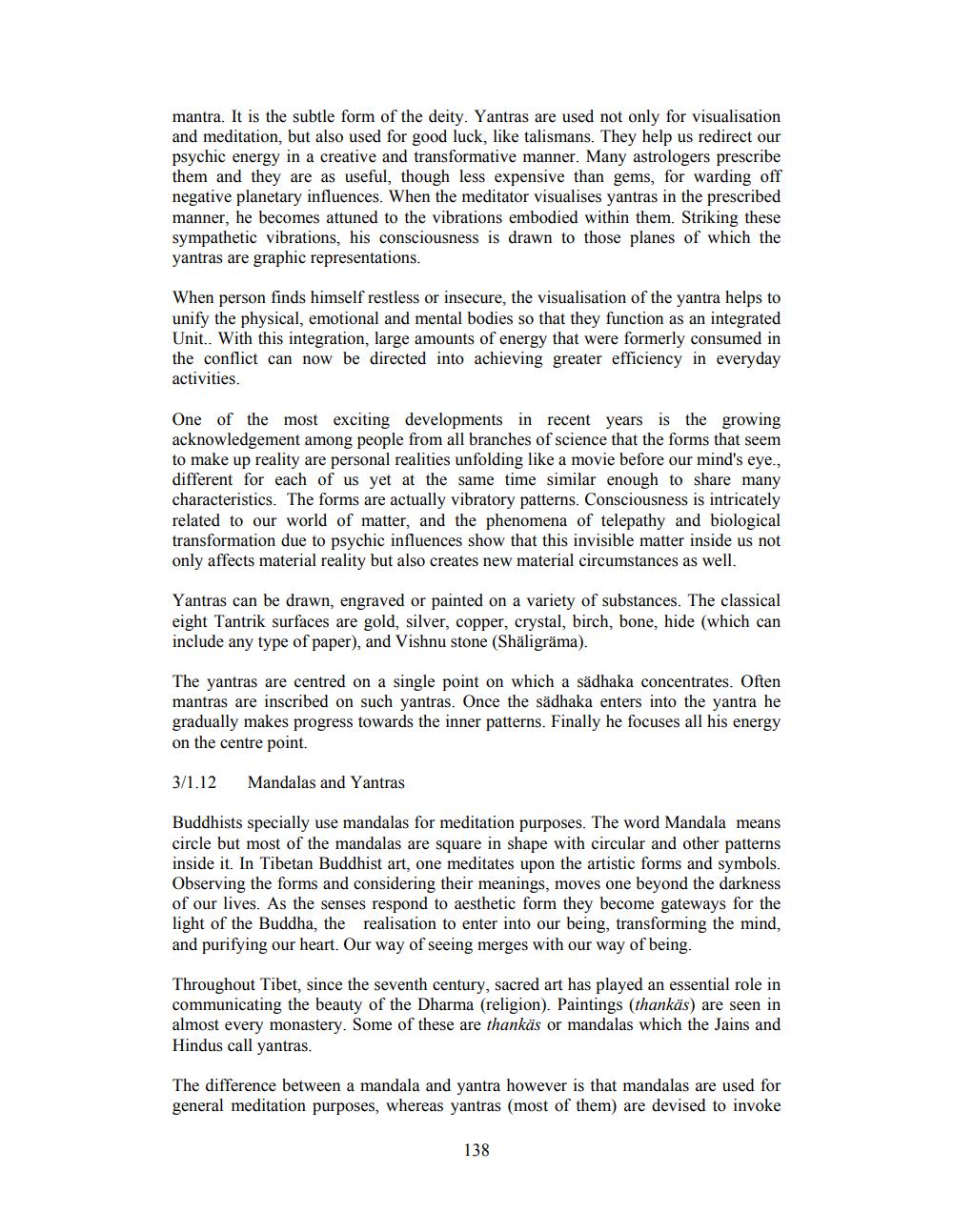________________
mantra. It is the subtle form of the deity. Yantras are used not only for visualisation and meditation, but also used for good luck, like talismans. They help us redirect our psychic energy in a creative and transformative manner. Many astrologers prescribe them and they are as useful, though less expensive than gems, for warding off negative planetary influences. When the meditator visualises yantras in the prescribed manner, he becomes attuned to the vibrations embodied within them. Striking these sympathetic vibrations, his consciousness is drawn to those planes of which the yantras are graphic representations.
When person finds himself restless or insecure, the visualisation of the yantra helps to unify the physical, emotional and mental bodies so that they function as an integrated Unit.. With this integration, large amounts of energy that were formerly consumed in the conflict can now be directed into achieving greater efficiency in every day activities.
One of the most exciting developments in recent years is the growing acknowledgement among people from all branches of science that the forms that seem to make up reality are personal realities unfolding like a movie before our mind's eye., different for each of us yet at the same time similar enough to share many characteristics. The forms are actually vibratory patterns. Consciousness is intricately related to our world of matter, and the phenomena of telepathy and biological transformation due to psychic influences show that this invisible matter inside us not only affects material reality but also creates new material circumstances as well.
Yantras can be drawn, engraved or painted on a variety of substances. The classical eight Tantrik surfaces are gold, silver, copper, crystal, birch, bone, hide (which can include any type of paper), and Vishnu stone (Shäligräma).
The yantras are centred on a single point on which a sådhaka concentrates. Often mantras are inscribed on such yantras. Once the sädhaka enters into the yantra he gradually makes progress towards the inner patterns. Finally he focuses all his energy on the centre point.
3/1.12
Mandalas and Yantras
Buddhists specially use mandalas for meditation purposes. The word Mandala means circle but most of the mandalas are square in shape with circular and other patterns inside it. In Tibetan Buddhist art, one meditates upon the artistic forms and symbols. Observing the forms and considering their meanings, moves one beyond the darkness of our lives. As the senses respond to aesthetic form they become gateways for the light of the Buddha, the realisation to enter into our being, transforming the mind, and purifying our heart. Our way of seeing merges with our way of being.
Throughout Tibet, since the seventh century, sacred art has played an essential role in communicating the beauty of the Dharma (religion). Paintings (thankäs) are seen in almost every monastery. Some of these are thankäs or mandalas which the Jains and Hindus call yantras.
The difference between a mandala and yantra however is that mandalas are used for general meditation purposes, whereas yantras (most of them) are devised to invoke
138




